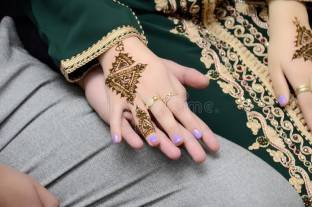The intercultural relation between Argentina and Italy
The intercultural relation between Argentina and Italy
The Italian and Argentinian cultures have a lot in common due to the immigration wave that took place in the twentieth century. Despite the huge distance between the two countries and the fact that each is located in a different continent, the two cultures have amazingly merged together during the last century.
History of Italian immigration
Argentina welcomed millions of Italian immigrants between 1880 and 1930, helping in the biggest voluntary migration in modern times. Argentina is sometimes regarded as Latin America's most “European” nation, and its capital was referred to as the “Paris of South America”. A large percentage of Buenos Aires citizens in the middle and upper classes were of Italian descent. They did not intentionally embody Italianness, but did so by nature. Italo-Argentines (first generation Argentines born to Italian parents) founded groups of artists and organizations between the 1880s and 1920s, according to CUNY Academic Works.
In the second half of the 19th and the first half of the 20th centuries, Italians started to migrate to Argentina, either in search of employment opportunities or to flee disastrous wars. In reality, between 1870 and 1960, around two million Italians immigrated to Argentina, altering the country's demographics. More than 30 million individuals in Argentina today are identified as having some Italian ancestry. This makes up about two-thirds of the whole population, making Argentines of Italian descent the majority ethnic group, CBS News reported.
Italian traditions
After assimilation, when Italian immigrants in Argentina started marrying into native families, Spanish families, and other ethnic groups, Italian culture became what it is today. That marked the beginning of structures with an Italian aesthetic, eateries and cuisine, and language and expressions of the Italian people. Other cultures in Argentina (i.e., other immigrants of all backgrounds) didn't hesitate to draw on Italian culture to stereotype it or criticize Italians' behavior, showing that the culture and essence of Italians weren't only dependent on how they perceived themselves, according to Vamos Academy.
Italians had a significant influence on Buenos Aires' art and architecture as well. Italian architect Mario Palanti created the nearby Palacio Barolo as a monument to the Italian poet Dante. According to historian Eduardo Lazzari, the structure's 22 levels correspond to the 22 stanzas of Dante's “Divine Comedy”, and its nine arches reflect the nine circles of Hell. The Argentine art form known as Fileteado, which can be seen on signs all over the city, was first created by Italian immigrants, CBS News said.
According to CBS News, street festivals are common in Argentina, where an estimated 62% of people identify as having some Italian background. Italian is the second most widely spoken native language in the country after Spanish, though everyone speaks a little bit of it through gestures. The Italian dance “tarantella” is known in Argentina as well. Even today's tango has an Italian link. Years ago, Italy was used as a source for some of the European instruments that are now found in what have become Buenos Aires' most well-known melodies.
Italian food
The traditions, culture, and culinary concepts in Argentina are all influenced by Italy. Food is seen as a community activity that unites family members or allows friends to catch up. Another regular occurrence is the “sobremesa”, which is a long conversation at the table that continues long after the meal has ended, according to Vamos Academy.
Pastries, sauces, and charcuterie have all been influenced by Italian cuisine. Italian food is expected to be found everywhere. There is a pizzeria on almost every corner of Buenos Aires' renowned Avenida Corrientes. Güerrin is the most well-known pizzeria, founded by Italian immigrants in 1932.







